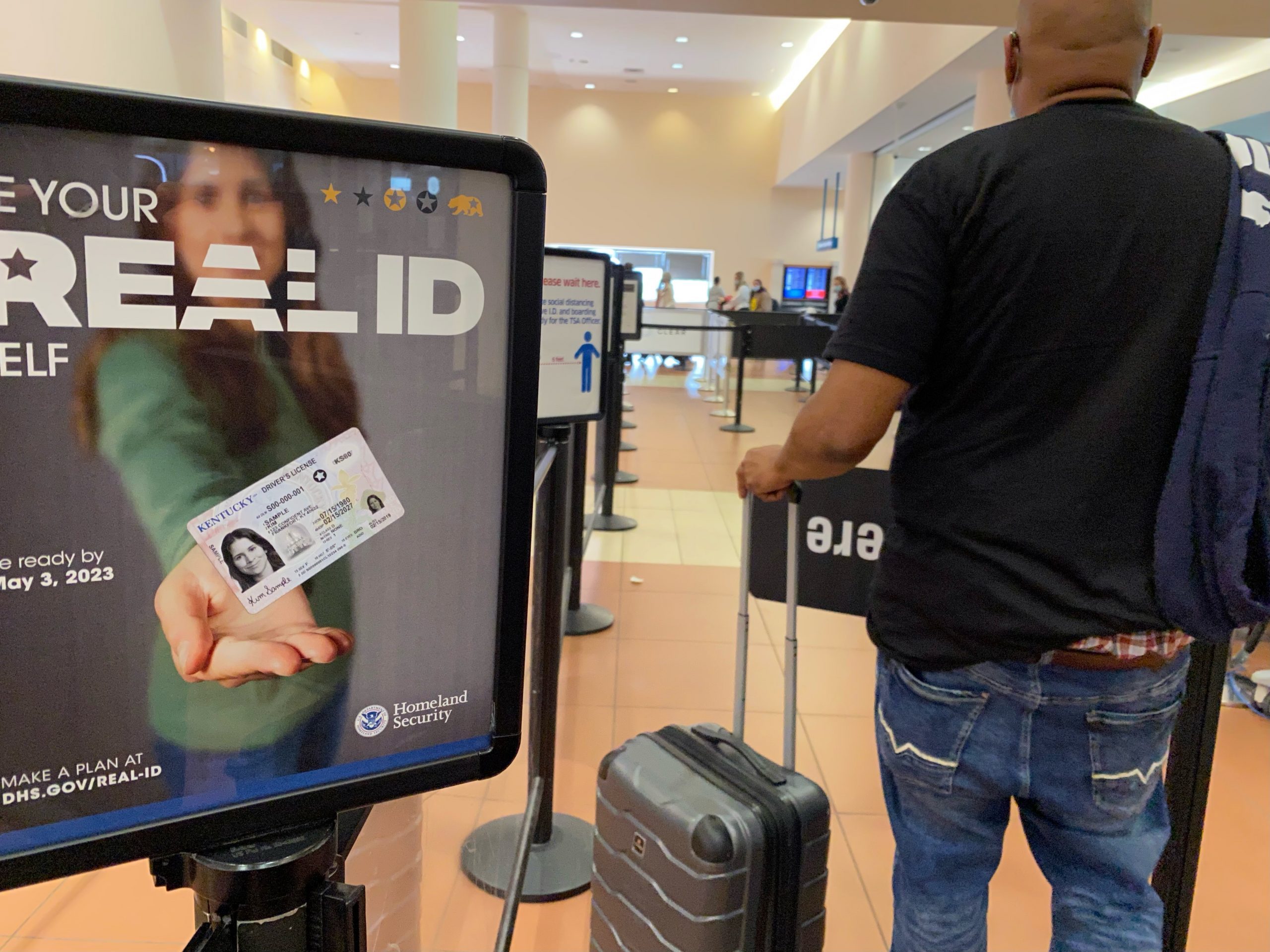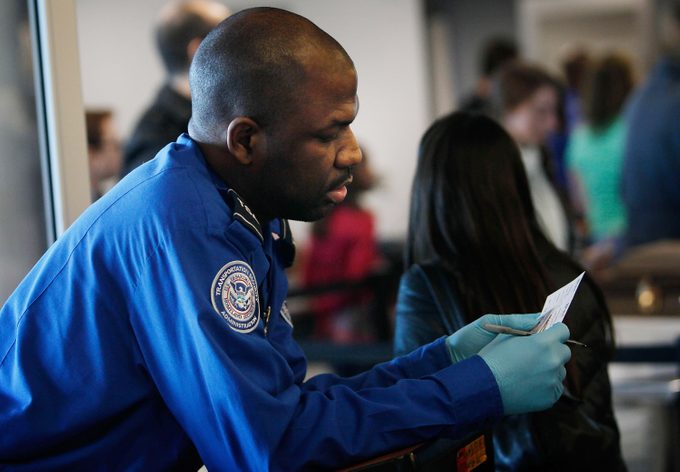After multiple delays, the Department of Homeland Security is set to begin enforcing the REAL ID requirement

What Is a Real ID? What to Know About Real ID Enforcement That Begins in May

The implementation of the REAL ID requirement for domestic air travel has been a long time coming. Originally, U.S. states were required to comply with the REAL ID Act by May 2008, but multiple delays—including those caused by DMV application pileups and disruptions from the COVID-19 pandemic—pushed the deadline back four times. The reprieves, however, are over. Travelers over 18 take note: beginning this spring, anyone who wants to fly will need a REAL ID-compliant driver’s license or another form of TSA-approved identification.
Jeff Price, former assistant director of security at Denver International Airport, warns that TSA’s implementation of the REAL ID requirement will come with a learning curve for both passengers and agents. “Infrequent flyers may have problems,” Price says, adding that travelers with older driver’s licenses that aren’t REAL ID-compliant—or haven’t been updated in years—could be caught off guard at security checkpoints.
Indeed. The Wall Street Journal reports that DMV appointments are already hard to come by in some states, and that’s even with increased appointment slots.
Here’s everything you need to avoid being stranded at the airport with a ticket to nowhere.
Get Reader’s Digest’s Read Up newsletter for more travel, humor, tech and fun facts all week long.
What is the REAL ID requirement?
According to the Department of Homeland Security (DHS), REAL ID-compliant identification will be required in the United States, the District of Columbia, and the five territories (Puerto Rico, Guam, U.S. Virgin Islands, the Northern Mariana Islands and American Samoa) for boarding federally regulated commercial aircraft, accessing some federal facilities and entering nuclear power plants. The REAL ID Act “established minimum security standards for license issuance and production and prohibits certain federal agencies from accepting for certain purposes driver’s licenses and identification cards from states not meeting the Act’s minimum standards,” DHS states. To be REAL ID-compliant, a driver’s license or ID card must feature one of five symbols at the top:
- Yellow star
- Blue star
- White star within a yellow circle
- White star within a blue circle
- White star on a yellow bear
Additionally, “REAL IDs incorporate security features like RFID chips, biometric data and encryption,” Price explains. “They are machine-readable for faster verification and comply with global standards for travel and security.”
Why are REAL IDs being required?

Congress passed the REAL ID Act in 2005 in response to a 9/11 Commission recommendation following the terrorist attacks on September 11, 2001. The Act established that all state-issued driver’s licenses and identification cards must meet uniform, minimum security standards. REAL IDs will “comply with global ID standards” and make it “easier to prevent fraud,” Price says.
When does the REAL ID requirement begin?
“Travelers who do not present a REAL ID-compliant license or acceptable alternative beginning May 7, 2025, will not be permitted through the security checkpoint,” DHS warns on its website.
While the requirement will likely lead to some disruption at the airport, Price notes that “TSA is rolling out REAL ID at a better time of year—after spring break and before everyone goes on summer vacation.”
How can I travel if I don’t have a REAL ID?
Homeland Security’s website notes that those without a REAL ID license must present TSA agents with any of these acceptable alternative forms of identification:
- U.S. Passport
- U.S. passport card
- Foreign government-issued passport
- State-issued Enhanced Driver’s License (EDL) from Washington, Michigan, Minnesota, New York or Vermont
- DHS trusted traveler cards (Global Entry, NEXUS, SENTRI, FAST)
- U.S. Department of Defense ID (as well as IDs issued to dependents)
- Permanent resident card
- Border crossing card
- Acceptable photo ID or Enhanced Tribal Card (ETC) issued by a federally recognized Tribal Nation/Indian Tribe
- HSPD-12 PIV card
- Canadian provincial driver’s license or Indian and Northern Affairs Canada card
- Transportation worker identification credential
- U.S. Citizenship and Immigration Services Employment Authorization Card (I-766)
- U.S. Merchant Mariner Credential
- Veteran Health Identification Card (VHIC)
How can I obtain a Real ID?
Once you have an appointment at your DMV, you’ll need to provide documentation that shows your full legal name, date of birth, Social Security number, two forms of proof of address (such as a utility bill) and lawful status.
About the expert
|
Why trust us
Reader’s Digest has published hundreds of travel stories that help readers explore the world safely, easily and affordably. We regularly cover topics such as the best places to visit (and the best times to visit them), tips and tricks to zoom through airport security, flight-attendant secrets, hotel-room hacks and more. We’re committed to producing high-quality content by writers with expertise and experience in their field in consultation with relevant, qualified experts. We rely on reputable primary sources, including government and professional organizations and academic institutions as well as our writers’ personal experiences where appropriate. We verify all facts and data, back them with credible sourcing and revisit them over time to ensure they remain accurate and up to date. Read more about our team, our contributors and our editorial policies.
Sources:
- Jeffrey Price, former assistant director of security at Denver International Airport and professor at Metropolitan State University of Denver; email interview, March 2025
- Department of Homeland Security: “Be Your Real Self”
- WSJ: A Looming REAL ID Deadline Is Creating a Real Headache for Fliers
- Transportation Security Administration: “Acceptable Identification at the TSA Checkpoint























